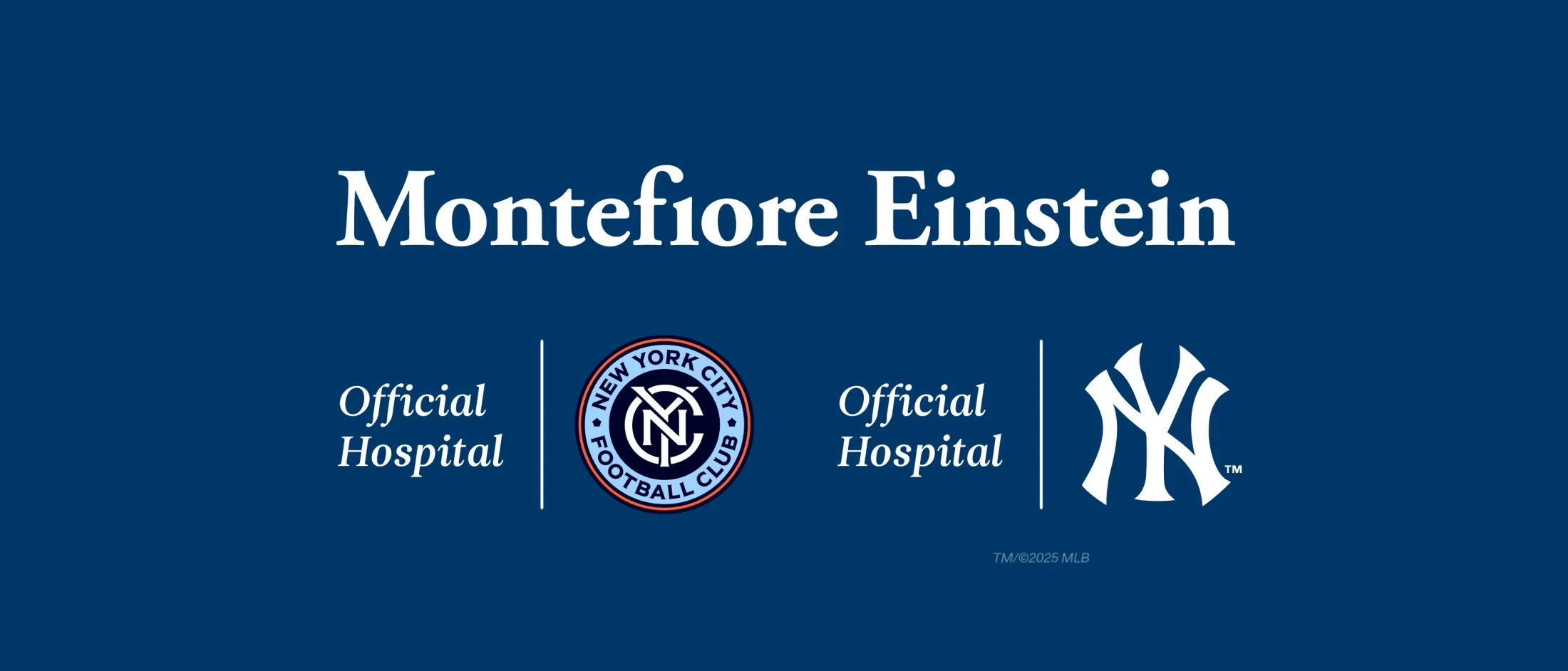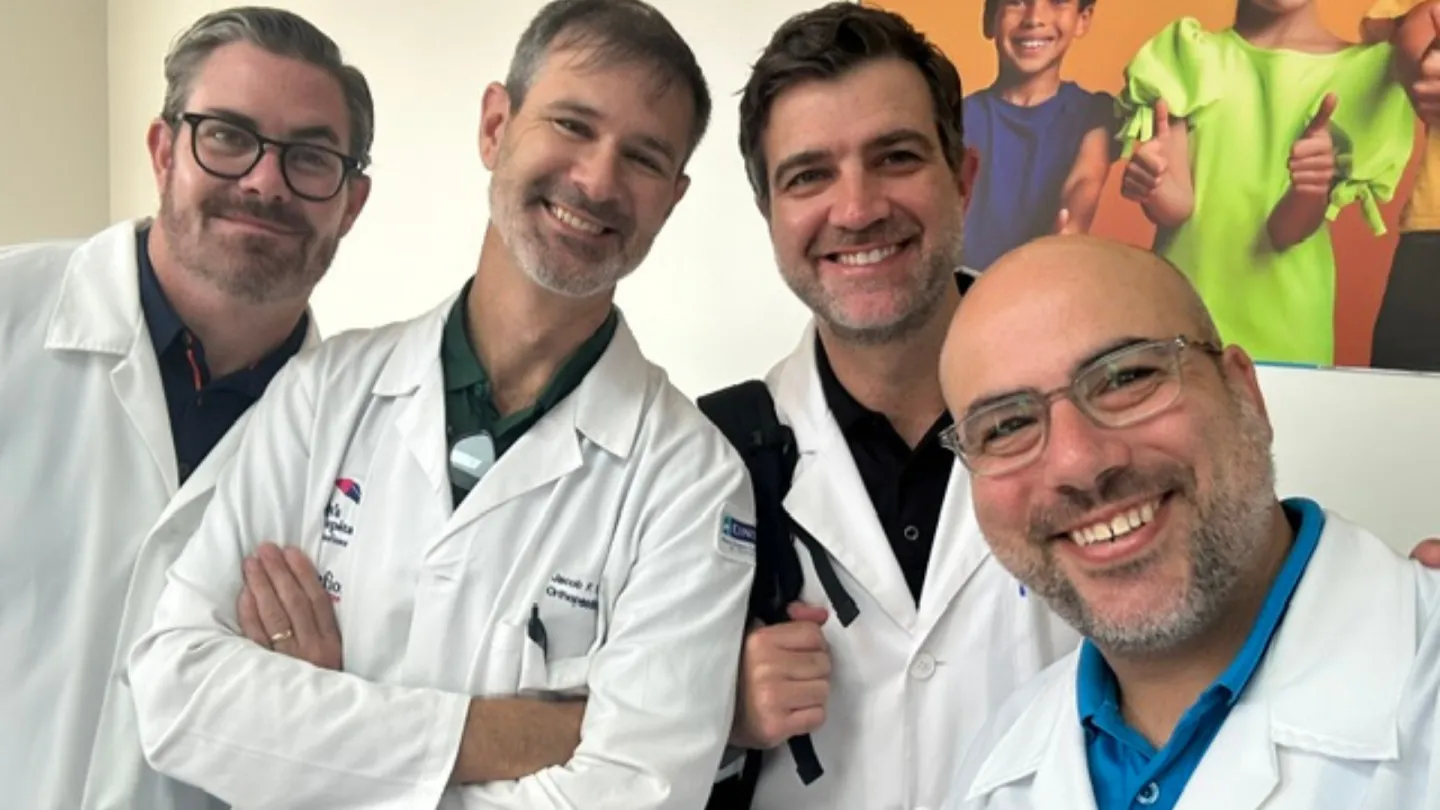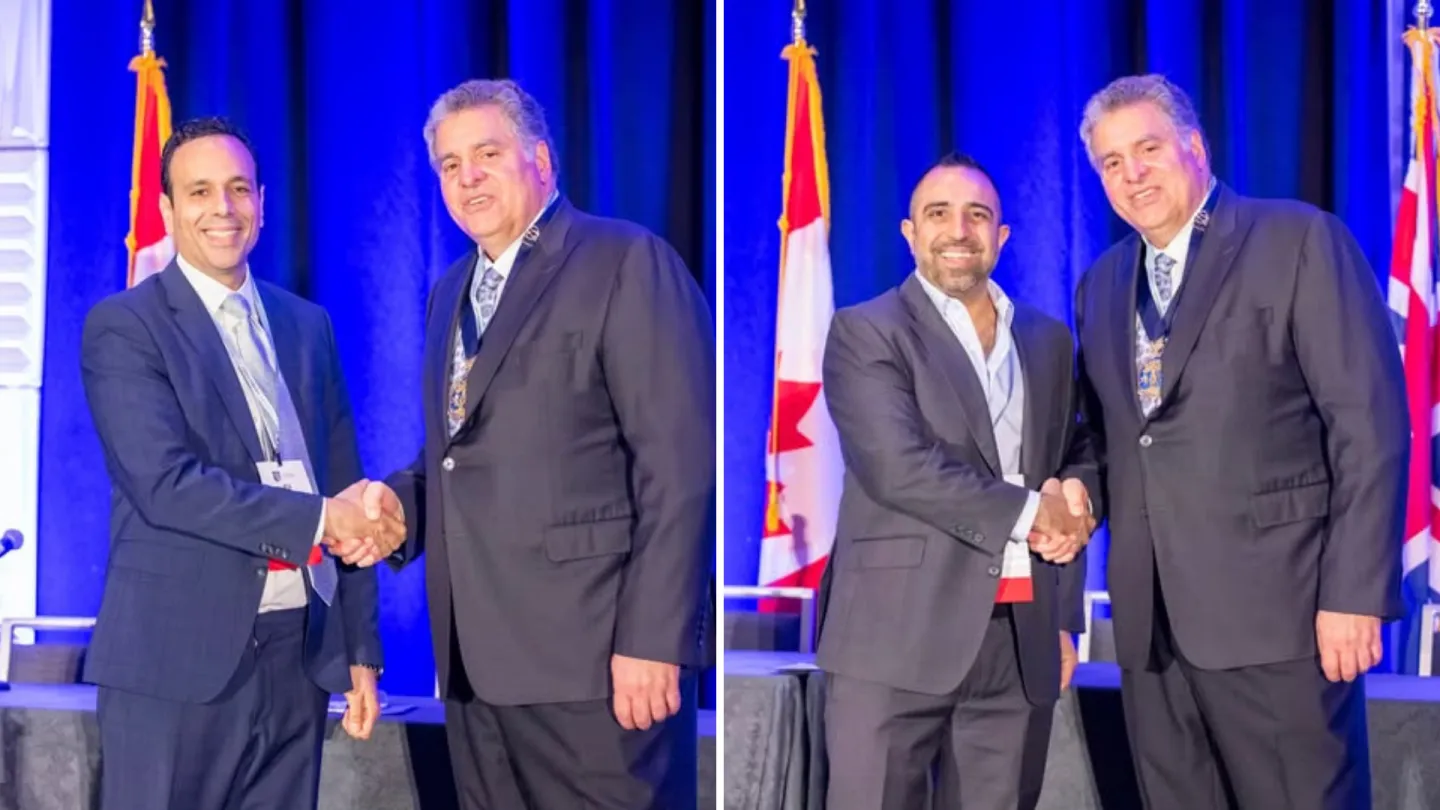Expert Knowledge & Specialized Care

Montefiore Einstein Sports Medicine brings together a tremendous breadth of expertise to treat a wide range of athletic musculoskeletal injuries. Using a collaborative and comprehensive multidisciplinary approach, we offer our patients state-of-the-art care using an array of surgical and nonsurgical treatment options, from physical therapy and bracing to arthroscopic and surgical approaches. We’re ranked in the top 1% of all hospitals in the nation for Orthopedics according to U.S. News & World Report.
Our fellowship-trained specialists are dedicated to the diagnosis and management of injuries involving all regions of the body, including common injuries like anterior cruciate ligament (ACL) tears, meniscus tears, shoulder instability, rotator cuff tears and nerve injuries. Our mission is to achieve maximal improvement in pain and function, ultimately returning you to your peak level of activity.
The experience of our patients and their loved ones—not simply their ailments—demands our full attention. Your dedicated care team will be there to discuss your condition, answer questions, assess treatment options and develop a treatment strategy that is best for you.
Athletic injuries present unique challenges. Musculoskeletal injuries and disorders can cause significant pain and dysfunction, limiting an individual’s ability to participate in sports, work duties and the normal activities of daily life. At Montefiore Einstein, we believe that optimal outcomes are the product of accurate diagnosis, appropriate and timely treatment and patient-centered management.
Our collaborative and comprehensive approach combines the expertise of physical therapists, occupational therapists, rehabilitation medicine specialists, pain management experts and orthopedic surgeons. Together, our specialists collectively assess and customize a treatment plan tailored to a patient’s individual needs.
Our status as an academic health system puts us at the forefront of our field. Together with our Albert Einstein College of Medicine, one of the highest NIH-funded institutions in the country, we are continually conducting research with the goal of discovering better treatment options for our patients. We routinely present our research findings and publish our study results in peer-reviewed publications.
Conditions We Treat
Montefiore Einstein treats a wide spectrum of orthopedic conditions, a selection of which you will find here. In addition to these, we have experience treating many other related conditions. Please contact us to schedule a consultation to review and discuss your specific healthcare needs.
Bursitis
Posterior cruciate ligament (PCL) injuries
Meniscus tears
Frozen shoulder (adhesive capsulitis)
Lateral collateral ligament (LCL) injuries
Knee problems and injuries
Medial collateral ligament (MCL) injuries
Patellofemoral pain syndrome
Patellar tracking disorder
Patellar dislocation
Patellar subluxation
Anterior cruciate ligament (ACL) tears
Cartilage lesions
Shoulder instability (dislocations)
Rotator cuff tears
Labral tears
Tendinitis
Tennis and golfer’s elbow
Arthritic conditions
Nerve injuries and disorders

Advanced Sports Medicine Treatments We Offer
Our treatment plans are designed to maximize functional outcome, returning you to health and activity as quickly as possible. We employ the use of nonoperative treatments whenever we can. When surgery is needed, we always consider the most conservative approach appropriate.
Outpatient surgery is often performed at the Hutchinson Ambulatory Surgery Center, a state-of-the-art facility equipped with high-definition arthroscopic cameras and monitors, X-ray imaging and an array of implants and instruments.
The anterior cruciate ligament (ACL) plays a critical role in maintaining stability of the knee joint, making it vulnerable to injury, especially during sports activities. When the ACL is torn, the knee may become unstable, resulting in the sensation of shifting. This is particularly noticeable when the athlete attempts to perform cutting and pivoting movements. Recurrent episodes of instability put the knee at risk for further damage to the articular cartilage and menisci, which may ultimately lead to arthritis. For patients who do not wish to pursue future athletic activities, nonsurgical treatment, such as physical therapy, is a viable option. In contrast, surgical reconstruction is recommended for more active patients who wish to return to athletic activities.
ACL surgery is performed once the patient’s knee has achieved full range of motion. The ACL is reconstructed with a graft obtained from either the patient’s own patellar tendon or hamstring tendons (autograft), or from a cadaver (allograft). The graft is passed between tunnels that are created in the tibia (shin bone) and femur (thigh bone). It is then secured on either end with metallic, plastic or biocomposite screws or buttons.
After ACL reconstruction, postoperative physical therapy is imperative to maximize range of motion, improve strength and, ultimately, return to sports. Time to full recovery is variable and depends on a variety of factors, which a doctor will take into consideration on a case-by-case basis.
The medial and lateral menisci are cartilaginous structures located in the knee joint between the tibia (shin bone) and femur (thigh bone). They serve many important functions, including load distribution, joint lubrication and maintenance of stability. When the meniscus is injured, these functions are impaired, which can result in joint line pain and mechanical symptoms, such as clicking, popping or locking. If left untreated, a meniscus tear may lead to the development of knee arthritis. A thorough history and physical examination are critical for diagnosing a meniscus tear. When a tear is suspected, an MRI is often performed to confirm the diagnosis.
Treatment of meniscal tears can often be performed arthroscopically. With the aid of a high-definition camera, instruments are inserted into the knee joint through small incisions. Treatment may involve either removing the torn portion of meniscus (meniscectomy) or repairing it (meniscus repair). The decision of whether to remove or repair the torn meniscus depends on the nature of the tear, the quality of the tissue, the presence of other injuries and the patient’s age and activity level.
Weight-bearing and range of motion may be restricted after a meniscus repair and are dependent, in part, on the surgical procedure performed. The doctor will make a decision regarding weight-bearing and return to function on a case-by-case basis. Regardless, physical therapy plays an important role during the rehabilitation process.
Cartilage is thin tissue that covers the ends of the bones within a joint, providing a surface for the joint to bend smoothly and with little resistance. Cartilage can be damaged from accidents, causing defects. This includes ACL tears, subluxations or dislocations of the patella and impaction injuries, such as a direct blow or fall on the knee or patella (kneecap). Damage can also occur slowly over time and with age, causing arthritis. Regardless of the cause, once cartilage is damaged, it can’t regenerate by itself. Cartilage reconstruction offers pain relief and stability to the knee, and it can delay knee replacement surgery for some time, restoring function in the interim.
There are various surgical methods for repairing cartilage. The microfracture technique, often employed for smaller defects, directly stimulates the body to form cartilage within the defect or injured region. For larger defects, osteochondral autograft can be harvested from the patient’s own joint and moved to an area where it is more functionally important. Even larger defects can be similarly reconstructed using osteochondral allografts, which use donor tissue obtained from a bone bank rather than the patient’s own tissue. These procedures work to heal cartilage damage by filling the injured region of the joint surface with uninjured and healthy tissue.
After surgery, protected weight-bearing and a formal course of physical therapy may be needed. A patient-specific program will be designed, taking into account the injury, reconstruction and individual patient factors. The goal of this treatment is to maximize surgical outcomes and improve pain and function.
Rotator cuff injuries involve either partial or complete tears of specific tendons within the shoulder joint. These injuries are extremely common and can range in severity. They can occur after a traumatic event, such as a fall, but sometimes develop over time without an isolated incident. They routinely result in pain, decreased strength and decreased range of motion. While physiotherapy can sometimes help restore strength and motion, in some instances, surgery is required.
Arthroscopic rotator cuff repair is a minimally invasive surgical technique. Working through several small incisions, a camera and special instruments are inserted into the shoulder. The acromion (the bone above the rotator cuff) is then smoothed and decompressed in order to minimize future injury. From there, rotator cuff tendons are reattached to their proper location on the humerus using small bone anchors and specialized sutures.
The patient can often return home the day of surgery either in a sling or brace. Following surgery, physical therapy is frequently necessary to help patients regain range of motion and strength.
The labrum is a structure that lines the edges of the shoulder socket and helps stabilize the shoulder joint (humeral head). Shoulder dislocation (Bankart tear) or overuse injuries (SLAP tears) can frequently result in a torn labrum. Patients typically report pain around the shoulder that may radiate down the arm. They may also experience shoulder instability, clicking or the sensation that the shoulder is starting to come out of joint. In some instances, a torn labrum can initially be treated conservatively. Some patients, however, will benefit from surgical repair.
Surgical repair is typically performed using arthroscopic techniques, during which time anchors are inserted through small incisions, affixing the labrum to its normal anatomic position.
Patients typically return home the same day in a sling or brace and begin early physical therapy to restore range of motion and strength.
Your Team of World-Renowned Specialists
Orthopedic Surgery Highlights
Physician Referrals
Montefiore Einstein embraces a collaborative approach.
If you have a patient who could benefit from our services, please reach out.
718-920-2060
Schedule a Visit
Have a general question or concern?
We’re available to help you by phone or email.
• 718-920-2060 • orthofeedback@montefiore.org

















